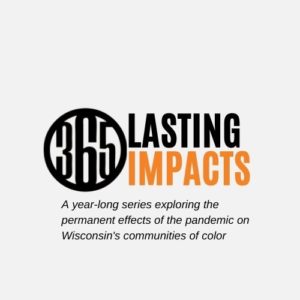
 Summer school enrollment in Wisconsin plummeted in 2020 due to the COVID-19 pandemic and in 2021 recovered somewhat but remained well below 2019 levels, according to a study released Wednesday by the Wisconsin Policy Forum.
Summer school enrollment in Wisconsin plummeted in 2020 due to the COVID-19 pandemic and in 2021 recovered somewhat but remained well below 2019 levels, according to a study released Wednesday by the Wisconsin Policy Forum.
Sara Shaw, senior education policy researcher at Wisconsin Policy Forum, said summer school could be an important tool to help students recover what they lost during the virtual learning of the pandemic period – both academically and socially.
Summer school is designed to address learning loss, she said – the learning loss that routinely happens over the course of the summer.
“We have increased understanding of how much kids lose over the summer,” she said. “We also have more awareness of how school plays into families’ needs for childcare, which is, of course, not the primary function of schools, but can be a difficulty, especially in a single parent working household or double parent working household, where childcare can be very expensive, very difficult to find. And summer schools can help plug that gap while also contributing to sort of student learning and student engagement.”
Statewide, summer school enrollment fell from 19,905 in 2019 to 8,056 in 2020. Last year saw enrollment rebound to 17,569.
Shaw said there is very little data on the racial and ethnic makeup of kids who go to summer school, but did say there’s plenty of evidence that any number of interventions – after school programs, summer school, extended school year – can help narrow the ever-present disparities in educational achievement, especially between Black and white students. But those interventions are most effective if the duration is long enough and attendance is consistent – which can be an issue in summer school.
The study highlighted a number of school districts, most of which mirrored that pattern.
One that didn’t was Green Bay, whose summer school enrollment in 2021 far exceeded 2019’s.
Wisconsin schools received $1.5 billion in Elementary and Secondary School Emergency Relief (ESSER) funding early in the pandemic, which school districts could use for a variety of responses to the pandemic. Green Bay chose to invest in summer school, Shaw said.
“Green Bay had a superintendent and a team who said this is the bucket that we are putting our money into. In the range of various COVID interventions that one could think of, they said, ‘We’re banking on summer school.’ And that kind of single minded focus on a goal aligned to student need, I think, is an exemplar of the kind of work that we hope districts are doing as they seek to support their students right now. They may choose to have those efforts applied to something other than summer school, but the basic premise (is), how do we know what our students need? How can we provide what they need?”
She said other districts could rely on other interventions to recover from the pandemic. Milwaukee Public Schools, for example, saw its summer school enrollment in 2021 actually fall slightly from 2020, largely because it has always used summer school as a “credit recovery” program to help students meet graduation requirements – requirements that were waived for 2020 and 2021. Rather than put their money into a summer school program designed for that specific need, “MPS made its bets elsewhere.”
Shaw said summer school can help more than academics.
“(Some) districts … treat their summer school programs almost like summer camp, and the goal is more like social engagement, to keep students together. And there’s a learning component, but it’s also about developing social emotional skills. So summer school can look many different ways in many different districts.”
She said Eau Claire schools especially focused on the social and emotional component.
“They were pretty clear that they were most concerned about students social and emotional health,” Shaw said. “What they were hearing from teachers, principals and parents was that kids were not doing okay. If you’ve got them in summer school, by all means, take advantage of the opportunities for academic learning … but it was also for that opportunity to be back together and rebuild relationships and remember how to be positively in community with each other.”
Shaw said it’s not clear what summer 2022 will hold, but did say many schools still have ESSER funds to allocate and summer school would be a good investment.
“My crystal ball is not particularly clear today,” she said. “The one piece that we did get from specifically MPS was their hopes that they would see enrollment increase this year because of their expanded offerings and because their usual graduation requirements are all back in place. I hope that we regain where we were in summer 2019 enrollment, that seems like a pretty easy baseline that we could recover, and be a mark of our school system returning into some form of health.”
The Lasting Impacts series is funded by a grant from the Wisconsin Department of Health Services. The best way to protect yourself and your community from COVID-19 is to get vaccinated and stay current on boosters. Click here for more infomation.



